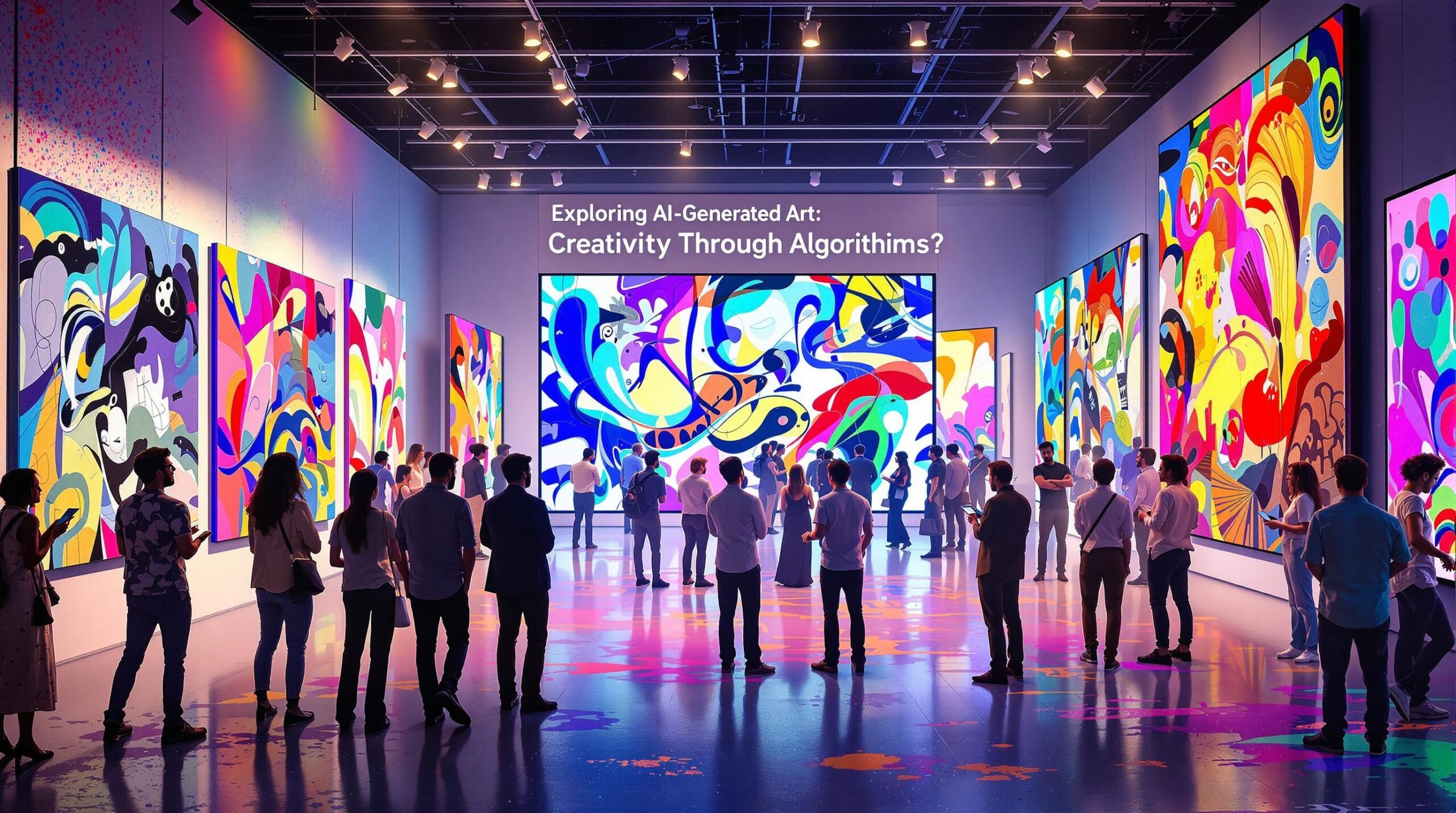Artificial intelligence (AI) is revolutionizing various fields, including art. AI-generated art is experiencing a significant surge in popularity. This intersection of technology and creativity raises profound questions about the nature of artistic expression. As AI-generated art becomes more prevalent, it challenges traditional notions of creativity and originality.
Historical Context of AI in Art
AI’s role in art is not a new phenomenon. The exploration began decades ago with early experimental ventures. Artists and technologists have long experimented with algorithms to create visual expressions. In the 1960s, pioneers like Harold Cohen began using computer algorithms to generate art. Cohen’s “AARON” program created intricate artworks mimicking traditional methods. These early attempts laid the foundation for today’s AI art movement.
With advancements in machine learning, AI’s role in art has evolved significantly. Modern AI can analyze vast datasets, learning patterns, and styles autonomously. This capability allows AI to produce artworks that can evoke deep emotional responses. Moreover, AI’s ability to mimic famous art styles or even create novel ones has intrigued artists and audiences.
How AI Art is Created
Creating AI-generated art involves several techniques and tools. One popular method is using Generative Adversarial Networks (GANs). GANs consist of two neural networks: a generator and a discriminator. The generator creates images while the discriminator evaluates their authenticity. Over time, the generator improves its outputs, producing realistic art pieces.
Deep learning models, particularly convolutional neural networks, are also used in AI art creation. These models analyze existing artworks to learn patterns, styles, and techniques. AI generates new art that resonates with human viewers by understanding these intricacies. Style transfer, another method, allows AI to alter an image in the style of a chosen artist. This creates replicas that blend existing content with artistic flair.
The Appeal of AI-Generated Art
AI-generated art intrigues both artists and collectors for different reasons. For artists, AI provides a new tool for expression, extending their creative possibilities. It allows them to explore unexplored styles and experiment without traditional boundaries. Artists can collaborate with AI to push the limits of creativity, creating hybrid art forms. This collaboration can result in pieces that neither AI nor humans could produce alone.
AI art presents a novel and often unpredictable experience for collectors and enthusiasts. The uniqueness of AI-generated pieces adds allure, attracting those seeking distinct collections. Furthermore, the process behind AI art creation also garners interest. Understanding the algorithms and data inspires appreciation for both technology and artistry.
The Debate on Creativity and Originality
AI-generated art sparks debate regarding creativity and originality. Critics argue AI lacks true creativity, functioning only as a tool simulating human input. They claim real creativity demands conscious intent, emotion, and personal experience. Supporters contend that AI’s capability to innovate challenges traditional definitions of art. They argue creativity can emerge from AI’s analysis and synthesis of existing works.
The question of originality also arises. AI can replicate styles or produce works resembling existing pieces. This blurs the line between originality and imitation, challenging legal and ethical frameworks. Despite these debates, AI-generated art continues gaining acceptance, prompting discussions about evolving artistic concepts.
AI Art in the Contemporary Art Market
AI-generated art is making significant inroads into the contemporary art market. Auction houses have started including AI pieces in their portfolios. AI-generated art has fetched substantial prices, signaling its acceptance among collectors. In 2018, Christie’s auctioned “Edmond de Belamy,” an AI-generated portrait, for $432,500. This sale marked a notable moment for AI art in the traditional art market.
The market’s reaction demonstrates a growing interest in AI’s potential for art. Galleries and museums are also beginning to exhibit AI-generated art, acknowledging its place in contemporary culture. However, integrating AI art into mainstream markets involves challenges. Defining ownership rights and copyright issues requires careful consideration for AI-created works.
Ethical and Philosophical Implications
AI art’s rise introduces ethical and philosophical implications. A significant concern is authorship. Determining the creator becomes complex when AI heavily contributes to the artwork. Is the artist the one who programmed the AI, or does the AI itself bear credit? These questions challenge traditional notions of authorship and intellectual property.
Additionally, AI art raises concerns about the future of human artists. Will AI supplant artists, relegating human creativity to a secondary role? These considerations highlight the broader implications of AI’s integration into society. They urge reevaluating what it means to be creative in an automated world.
The Future of AI-Generated Art
The future of AI-generated art promises both exciting opportunities and challenges. As AI technology advances, so will the sophistication of AI-generated creations. Artists will continue exploring this digital frontier, merging technology with traditional practices. This hybrid approach may create new art movements inspired by human-machine collaboration.
However, the art community must address ethical concerns and practical implications as AI art develops. Transparent methods for creating AI art must be established to maintain trust and authenticity. Additionally, discussions surrounding copyright and ownership will require ongoing legal considerations.
In conclusion, AI-generated art is redefining the artistic landscape. It challenges perceptions of creativity, originality, and artistic value. While debates persist, AI’s role in art is increasingly prominent. It offers new avenues for artists and enthralls collectors with its unique allure. As society navigates this new frontier, the dialogue around AI and art will undoubtedly evolve. As AI continues to blur the boundaries of creativity, its full impact on the art world remains to be seen.

